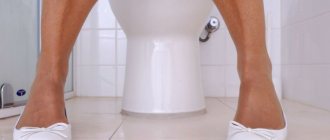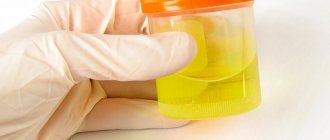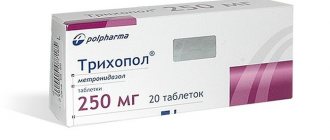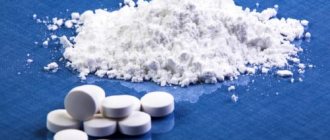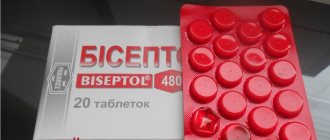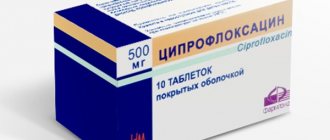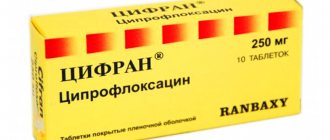Cystitis is inflammation of the mucous membrane of the bladder. This disease is common to all ages. Up to 40% of women on earth suffer from it at different periods of life. Faced with this problem, I want to quickly get rid of the unpleasant and painful sensations. The first thing that comes to mind is warming procedures. Is it possible to take a hot bath with cystitis, because, as you know, heat relieves inflammation and pacifies pain. Self-medication in this case is undesirable and can even be dangerous. It is better to consult a specialist and get his recommendations.
About the disease
Women are more predisposed to this disease due to the physiological characteristics of the body - they have a shorter and wider urethra than men. Therefore, the infection quickly reaches the bladder, inflaming its lining.
- When examining tests taken by a woman, a laboratory technician will find E. coli or chlamydia in the urine. The “culprits” of the disease may also be candida fungus or ureaplasma. All this is evidence of an infectious disease.
- But there is also another type of cystitis, provoked by diabetes mellitus, serious problems with the digestive system, poor circulation in the pelvis and weakened immunity. Sedentary work, too tight clothing, and indulgence in fatty, overcooked and spicy foods can also provoke the development of cystitis.
- People with metabolic disorders, as well as women who have entered the menopausal phase, often complain of symptoms similar to cystitis. With cystitis, women often associate it with hypothermia (they say that they have caught a cold). Therefore, they try to get rid of symptoms with heat - someone puts a heating pad on the lower abdomen or between the legs, and someone goes to the bathhouse. But not every heat can be useful.
The dangers of taking a bath
Soothing herbal bath
You can also soothe pain in the bladder with the warmth of your palms, if you hold them for some time on your stomach in the right place. Warming compresses, heating pads, hot bottles - all these methods affect the vessels of the bladder, dilating them. This just alleviates the woman’s suffering (but does not cure cystitis).
It would seem reasonable to exert heat on the bladder from all sides. For this reason, some women tend to take a hot bath with cystitis. It helps relieve painful symptoms, but also increases the risk of developing inflammation. Through steamed vessels, blood begins to move faster, bringing the infection even deeper.
Warm heating pad or bottle
As an alternative to water procedures for cystitis, you can use a heating pad to relieve pain in the lower abdomen. A bottle filled with warm (about 380C) water will also work. The procedure should not exceed 20 minutes. Even if the pain has not subsided, but only slightly dulled, you need to take a break for half an hour, and then repeat the warming with a heating pad or bottle.
The following is also used as a source of dry heat:
- millet;
- salt;
- sand;
- boiled jacket potatoes.
Bulk products are heated in a frying pan to 400C and placed where it hurts. The potatoes are mashed, placed in a bag and wrapped in cloth. Since the temperature of boiled potatoes is high, make several layers of material, gradually reducing their number. 30 minutes - this is how long you can keep the compress on your stomach. Then take a half-hour break.
After the pain is relieved, many decide that recovery has already occurred and stop further therapy. Don't do this!
In order to destroy all generations of microbes that cause cystitis, it takes at least three days (preferably five). Even if the cramps do not return, complete the antibiotic treatment. Otherwise, untreated cystitis will go into a latent phase, possibly becoming chronic. And the previous type of drugs will be useless, because the bacteria will already have acquired immunity to them.
If the doctor allows
Consultation with a doctor
Whether it is allowed to take a bath will be determined by the attending physician, who will determine the degree of development of cystitis and identify the cause of the disease. If taking a bath is allowed, it should not be lying down. It is allowed to sit in hot water without completely immersing the small pelvis in it - only the lower abdomen should warm up.
It is recommended not to sit in ordinary water, but to make decoctions of medicinal herbs that have antibactericidal properties. Most often they use chamomile, but you can also take horsetail, St. John's wort, yarrow, and bear's ears. Lingonberry leaves and dill umbrellas will help. The more comprehensive the collection, the better.
A warm foot bath is more beneficial for cystitis. Despite the fact that there is no direct effect of heat on the pelvic vessels, the reaction will be positive. There are acupuncture points on the feet that are connected to all organs (including the bladder).
Foot baths will help relieve painful symptoms and will not provoke the spread of the inflammatory process. To enhance the effect after the procedure, you should put warm socks on your feet, go to bed, put a heating pad down your stomach and rest.
Is it possible to warm cystitis with dry heat and how is it done?
You can choose any source that can help with the warming up procedure: this is an ordinary rubber heating pad, an electric one, or a bag of heated sand or salt. However, the advice of a doctor is required in this choice. He will also set the duration of the procedure and temperature conditions, as well as the number of warming sessions. Whether it is possible to warm cystitis with dry heat, whether there are any contraindications in this particular case, will be shown by the results of laboratory tests. Most often, the procedure lasts fifteen minutes. The temperature of the water in the heating pad should not exceed fifty-five degrees, although usually it is forty-five, and the rubber heating pad should be wrapped in a layer of cotton fabric, or not applied to a naked body. An electric heating pad is not heated to more than fifty degrees. After each procedure, it is necessary to wrap the pelvic area or wear a special therapeutic belt for the lower back.
River sand or rock salt is heated in the oven or in a frying pan to no more than forty degrees, then a tight bag is applied to the lower abdomen for a maximum of fifteen minutes. As a last resort, you can warm your stomach with regular potatoes, boiled until tender and mashed in a napkin. There are good and proven methods of warming up with folk remedies, when warming up for cystitis is performed at home (if, for example, in a remote area it is impossible to use a physiotherapy room due to its absence). One of the most famous is sitting over a brick. A very hot brick is placed in an iron bucket, the edges of the bucket are wrapped with cloth. Next, the patient sits on this bucket and sits for about fifteen minutes, while simultaneously covering the entire lower part of the body with a blanket. After such a procedure, you need to immediately go to bed or protect the pelvic area with a warm woolen belt.
However, with all this, we must not forget that warming itself does not cure the disease itself, but only relieves unpleasant symptoms. Treatment of cystitis must be adequate, and only a specialist - a urologist - can make it so. Because first of all, you need to stop the inflammatory process and deal with pathogenic microflora. But only a drug can do this, and not just any antibiotic. Cystitis occurs differently in each person, because the infections that cause it are of a different nature. The right medicine can only be determined through laboratory tests of a smear that was taken from the patient. First, the type of pathogenic microflora that caused inflammation of the bladder (cystitis) is determined, then it is tested for reaction when exposed to various antibiotics. Without drug therapy with heating alone, no matter how good they are, this disease cannot be overcome. And if you warm up during the acute course of the disease, you can greatly complicate the situation.
Warming is not a treatment, it is an additional measure to the main therapy that helps relieve pain, spasms and the like, that is, symptoms. The pain, of course, decreases, the spasms are relieved, and urination finally occurs safely. But this does not mean that the inflammatory process has stopped. Most women, who suffer from cystitis much more often than men (their bladder, for anatomical reasons, is much less protected from external infections), for some reason believe that this disease begins from a cold. This is almost always not the case. Inflammation of the bladder in women (cystitis) occurs purely due to infection
, which can be provoked by hypothermia into a growth spurt. That is why it is impossible to cure cystitis with heating; there is only a danger of turning the disease into a chronic one, or even making it even worse when tumors begin to grow, and the inflammatory process spreads to the kidneys and other organs. Cystitis and pyelonephritis are interrelated ailments, because it is after the third or fourth relapse that chronic inflammation of the bladder spreads to the kidneys.
Contraindications
This disease can be accompanied not only by painful urination, but also by other symptoms - high temperature, fever, weakness, headaches. Here the question “is it possible to take a bath with cystitis” is no longer acceptable - even foot procedures are contraindicated. Baths, saunas and showers in this situation can provoke complications of the disease.
Contraindications for taking a bath with cystitis include the following:
- if inflammation of the bladder is caused by another disease;
- the procedure is excluded during menstruation - bleeding may occur;
- During pregnancy, even heating pads on the lower abdomen are prohibited - there is a risk of miscarriage due to the uterus becoming toned;
- for skin diseases in areas exposed to steaming;
- for severe pain in joints and muscles, thermal procedures are not recommended;
- existing neoplasms and genetic predisposition to oncology are a taboo for baths.
In any case, the decision about whether a woman suffering from cystitis should take a bath or not, and which one, remains with the attending physician. This diagnosis is not a case where you can self-medicate.
Cases when heating is prohibited
In a number of situations, the answer to the question whether cystitis can be treated is clearly negative:
- exacerbation of a chronic form, which is rarely a separate disease;
- inflammation accompanied by fever;
- during pregnancy, as it can provoke an increase in the tone of the uterine muscles and a miscarriage;
- during menstruation;
- stones in the bladder cavity;
- urine with blood - heating causes blood vessels to dilate, which can lead to bleeding;
- presence of concomitant diseases;
- abdominal pain of unknown origin.
Recommendations
Recommendations for taking a bath
If a bath (sitz or foot bath), in the opinion of the doctor, is acceptable, before starting the procedure, the woman should familiarize herself with a number of recommendations.
- A hot bath for cystitis implies a water temperature slightly higher than body temperature – 37.5°C.
- The duration of the bath should be no more than 15 minutes - during this time the water has time to cool down.
- The room in which the procedure is carried out must be well heated.
- To avoid temperature differences, the upper part of the body should be covered with warm clothes or wrapped in a blanket during the procedure.
- After a bath, you can’t go outside so as not to really catch a cold. The best time for the procedure is just before bed.
- While taking a bath, it is recommended to drink herbal tea with a diuretic effect - the more often and more abundantly a woman urinates, the faster she will eliminate inflammation.
- If you took baths using herbs, you should not wash yourself or take a shower after the procedure - let a film of the herbal decoction remain on your body.
Is it possible to take a hot bath during cystitis?
A hot bath for cystitis is the most common advice of “traditional healers”. The addiction of our people to traditional medicine recipes, sometimes completely unfounded, can only be explained by carelessness, laziness and reluctance to immediately consult a doctor. And of course, the hope for the notorious “maybe it will fly by.”
Since this topic is relevant, let’s consider which baths are effective, when they can bring relief, when they can be downright dangerous, and whether it is possible to take a hot bath for cystitis.
What may be a contraindication
Before discussing the arguments for and against, from the point of view of evidence-based medicine, you should pay attention to two important points:
- Thermal procedures in the form of heating pads, hot baths and foot baths for cystitis are only an auxiliary, symptomatic treatment method that temporarily relieves pain, but cannot relieve cystitis without complex drug therapy.
- There are a number of contraindications in which the use of thermal baths for cystitis is strictly unacceptable.
Many patients believe that if the inflammatory process in the bladder is provoked mainly by hypothermia, then it can be cured with heat. Yes, indeed, warming up helps reduce pain, but in certain cases it can speed up the process of rapid bacterial proliferation. Therefore, for any signs of cystitis, a doctor’s consultation is necessary, only he will decide whether it is possible to take a bath with cystitis in women in each specific case.
Contraindications to thermotherapy are:
- acute clinical picture of the disease, accompanied by fever, weakness and headaches;
- the presence of background foci of inflammation;
- discomfort when urinating (soreness, pain, signs of spasms);
- the presence of mucus, bloody and purulent impurities in the urine;
- development of neoplasms in the genitourinary area;
- menstrual period and pregnancy status;
The benefits and harms of warming up for cystitis
Doctors note the positive effect of thermotherapy in uncomplicated cystitis. Healing warm baths for cystitis in women are prescribed as a comprehensive treatment, under the supervision of a doctor, in specialized centers and specialized sanatoriums. At the same time, patients note a significant improvement in their overall well-being.
How it works
The positive effect of thermotherapy is due to the influence of thermal, chemical and general physiotherapeutic effects on the female body. As a result of thermal influence:
- Processes in tissue circulation are significantly activated.
- Metabolic processes in tissues improve.
- Dilatation of blood vessels is noted.
- The increased retrusor tone is relieved.
The influence of the chemical factor is associated with the selection and specific properties of medicinal herbs. For this purpose, herbal mixtures are selected that have an antibacterial, relaxing and analgesic effect. How long the effect of these procedures will be without complex drug therapy is unknown. The disease may indeed recede, but it is unlikely to go away completely.
What causes negative statements from doctors?
Despite many positive reviews from patients about the treatment of cystitis with thermotherapy, doctors do not approve of this method, especially when it is carried out independently at home. Such treatment can significantly worsen the clinical picture of the disease.
What is the reason for this?
Out of ignorance or inexperience, or in order to quickly block pain, patients can undergo thermal procedures, despite the fact that their malaise is accompanied by a high temperature. Thus creating a favorable background for the proliferation of pathogens that provoke inflammatory reactions in the bladder. And the use of hot baths will only contribute to this process.
And if this fact develops unsuccessfully for the patient, and the infection progresses, inflammatory reactions will affect the kidneys, which will manifest as pyelonephritis.
Thermal effects on the body have two “sides of the coin”. On the one hand, it is manifested by vascular dilation, which is good for preventing retrusor spasms. On the other hand, with complicated cystitis, it may manifest itself as signs of hematuria. Against the background of serious damage to the reservoir walls of the bladder, which is manifested by bloody inclusions in the urine, vasodilation will lead to even greater intravesical hemorrhage and deterioration of the patient’s condition.
If one of the signs of the disease is uncontrolled urination, then treatment with hot baths will further contribute to this. Heat causes muscle relaxation, which provokes a complete loss of control over the obturator apparatus (sphincter) and leads to involuntary urination.
The use of hot baths for cystitis only worsens the condition of patients. Cystitis can be alleviated only by baths with a water temperature of no more than 38 °C (warm baths), prepared with decoctions and tinctures of various medicinal herbs (horsetail, chamomile and calendula inflorescences, birch leaves, knotweed or sage), with the addition of antiseptics - food soda, manganese crystals, etc.
When preparing thermal baths for cystitis at home, you must follow certain recommendations that will help you achieve the maximum therapeutic effect and not cause complications of cystitis.
Is it possible to warm cystitis with dry heat and heating pads?
These methods are not as dangerous as warming up in a bath, but they should also be discussed with your doctor. In any case, the procedure should not last more than twenty-five minutes, otherwise cystitis can be complicated by other diseases. Dry heat (a bottle of hot water or heated sand or salt) is applied to the lower abdomen or placed between the legs, and then covered with a blanket or rug. The temperature of the heating pad should not be more than 45 degrees to avoid burns on the skin. Warming up for cystitis in the lumbar region is not recommended, because the inflammatory process will quickly spread the infection to the kidneys. In any case, all warming procedures must be agreed upon with the attending physician.
, since there are practically no absolutely healthy people, and concomitant diseases from exposure to heat can progress. In no case should you use heating for cystitis at home if there is a tendency to tumors.
Many people believe that an inflamed bladder should be treated with hot foot baths. They are even made with mustard to enhance the heating. With cystitis, however, this does not help at all. And if at the time of warming up the patient’s temperature is elevated, warming the legs is completely contraindicated. If your feet are cold, it is better to wear socks and a therapeutic belt on your lower back. This will be much more effective. The fact is that the blood warmed in the lower extremities when approaching the pelvic area, including the bladder, will already cool down significantly; the effect of such warming is practically zero. For cystitis, if the doctor allows, you need to heat the pelvic area directly from the abdomen. And if at the moment the disease is in an acute condition, no warming procedures can be carried out at all.
Pain with cystitis indicates that the inflammatory process is in an active stage. This means that warming procedures are prohibited. You cannot warm yourself in a bathhouse or a sauna, as this provokes numerous complications, the infection will quickly spread in the body, the temperature will rise to its extreme limits, the pain will spread higher, which will indicate the onset of pyelonephritis. Both the sauna and the steam bath are a huge burden on the body. Even a healthy person needs to always be on guard and not overdo it with the steam room and temperature contrasts. And if there is an inflammatory process in the body, the defenses are always weakened, and therefore any stress on the body at the moment is extremely harmful. After an exacerbation, you need to wait a whole month before resuming trips to the steam room.
Warming up at the wrong time for cystitis is not beneficial, but harmful. A few weeks after the exacerbation, the doctor sends the patient for tests, and if they are positive, the bath will be allowed. You must always remember that whether it is possible to bask in the bathroom with cystitis, visit a bathhouse, apply heating pads, etc., should only be decided by a doctor. The patient will not lose anything from the lack of warming; one must always remember that all thermal procedures do not relieve cystitis, they only slightly help the body, relieving some symptoms. This is not the main, but an auxiliary means of treating cystitis.
However, warming up can do a lot of harm. Only antibiotics can truly fight the disease. Cystitis begins from infections, and hypothermia only provokes the onset of the inflammatory process , we must not forget about this. And it is impossible to create a favorable environment for harmful microorganisms to develop. Therefore, if cystitis is chronic, it is imperative to buy a belt made of camel hair, so as not to provoke relapses. And we should never forget that warming procedures much more often harm than help the treatment. Cystitis, like any infectious diseases, should not be treated independently. Non-infectious forms of cystitis (from taking medications, allergenic foods, and so on) are quite rare. Is it possible to warm up with cystitis in a bath, sauna, using dry heat and other methods, only a specialist can tell you.
Recommendations: we treat correctly
If a warm bath for cystitis is acceptable, according to the doctor, it should only be sedentary, the solution should cover only the lower abdomen (to avoid the infection from spreading to the upper parts of the urinary tract), or foot bath. Before using it, you should follow some recommendations:
- A bathtub or container for warming your feet should retain heat well (cast iron, ceramic or ceramic-acrylic).
- The water temperature should not be much higher than body temperature (37.5–38 °C).
- The duration of the procedure is 10–15 minutes. During this period the water will have time to cool down.
- The room where the treatment is taking place must be warmed up.
- To prevent temperature differences, the upper body is covered with a blanket or clothing.
- It is not recommended to go outside after warming up. It is better to warm up immediately before bed.
- Before the procedure, you should drink herbal tea that has diuretic properties. The more a woman urinates directly into the solution during the procedure, the greater the likelihood of the therapeutic solution entering the cavity of the bladder (the reverse process of retraction is a physiological property). This will speed up the relief of the inflammatory process.
- After baths, you should not wash or rinse with a shower.
What else can I do to improve my condition?
In addition to warming procedures, medical experts recommend that patients increase the amount of water consumed per day. The best option would be 10 - 15 glasses in 24 hours. It is recommended to add a small amount of salt to the water, which will reduce the acidity level of the stomach and urethra. The diet requires minimizing spicy and salty foods. It is advisable to avoid foods with high calcium concentrations during the treatment period.
To improve the condition you need to drink plenty of fluids
Possible recipe for bath solution
Healing solutions are made from various natural ingredients and a collection of many medicinal herbs. The proportion of ingredients is calculated according to the size and age of the patient.
The most popular recipes are:
- Chamomile decoction. 100 grams of chamomile are brewed in 10 liters of water for 30 minutes. The solution is filtered and poured into a container. When it has cooled to the desired temperature, it is heated for 15 minutes. Chamomile has calming, analgesic and anti-inflammatory properties.
- Soda solution. Used in case of infection spreading beyond the boundaries of the MP. The medicinal properties of soda are due to the ability to maintain acid-base balance in the structure of mucous tissues, creating an unsuitable environment for pathogens to develop. Prepare a soda solution at the rate of 20 grams of soda per two liters of water.
- A solution based on herbal mixture - stems and colors of echinacea, celandine and horsetail grass. Equal proportions of all ingredients are mixed and brewed - 50 g. mixture for 5–6 liters of water. In the same way, you can prepare a solution using equal proportions of birch, currant and eucalyptus leaves, oregano and violet. There should be enough decoction in the bathroom to completely cover the legs in a sitting position. From this the amount of the required herbal mixture is calculated.
- Manganese solution is an excellent antibacterial, antiseptic and astringent, and is effective in healing wounds and restoring mucous tissues. Warming water with manganese should be bright pink. To avoid burns, there should be no undissolved manganese crystals in it.
- Baths with furatsilin are prescribed for signs of purulent discharge. A ready-made solution of furatsilin is available in any pharmacy. For one procedure, 200 ml (one bottle) of the drug is enough.
Baths for children
Is it possible to take a bath if a child has cystitis? Only a doctor can tell you. You should not make your own decision. Despite the variety of different herbal infusions and their availability in pharmacy chains, children may have an allergic reaction to many of their components. Only the attending physician can choose the optimal treatment regimen for his patient.
When sanitizing the urinary tract of a child, warm medicinal baths can also be used. For children, they can be performed twice a day, immediately before afternoon and evening sleep.
To prepare a medicinal solution, fresh or dried infusions are used - sage, chamomile, linden and calendula inflorescences, dried herbs and strings. The steamed mixture is infused for 10 minutes, poured into a container and diluted with water to 37.5 °C. The baby needs to sit in the solution for up to 15 minutes.
After the baths, the child’s body is lightly blotted with a towel, dressed warmly or wrapped in a blanket so as not to be cooled. It is important to keep the heat longer so that the effect of the procedure is more effective.
The maximum effectiveness of cystitis treatment is achieved only by the correct combination of various methods - therapeutic medication and reasonable recipes from the arsenal of “healers”, under the supervision of a doctor and without any attempts at self-medication.
Herbal infusions
Dried chamomile flowers
Polyfloral infusions are more suitable for use for inflammation of the bladder than monofloral herbal decoctions. You can learn more about this from the video posted in this article, and we offer you three options for medicinal preparations, the recipes for which are listed in Table 2.
Table 2. Herbal infusions for preparing baths for cystitis.
| Name | Compound* | Cooking method |
| Collection No. 1 |
| Grind all ingredients well and mix. Brew three tablespoons of the mixture in two liters of water over low heat for five minutes. Then leave for one hour, strain and the resulting broth can be used. It is advisable to take a bath twice a day for 10-12 days. |
| Collection No. 2 |
| The method of application is the same as for collection No. 1. |
| Collection No. 3 | All herbs should be taken in equal proportions and mixed:
| Infuse in a water bath (1 liter), strain two tablespoons of the mixture and use as intended. The note. Collection No. 3 is well suited for local use (foot baths, sitz baths). |
| *Note. Take all ingredients in dried form. |
Features of the development of cystitis in women
Pathogenic microorganisms are always present on the mucous surfaces of various organs, but the natural protective microflora is able to suppress the vital processes of bacteria, preventing their further reproduction. Violation of the body's immune reactions leads to the development of inflammatory diseases, regardless of the nature of the disease and the route of infection.
In a healthy woman’s body, the microbiological background of the urethra and vagina is in a “sterile” state, and even microorganisms that get there, due to the close location of the anus or as a result of sexual intercourse, are quickly destroyed.
Violation of the immune properties of a woman’s body can be caused by:
- hypothermia;
- circulatory disorders in the pelvic organs;
- hormonal disorders;
- various vitamin deficiencies.
Symptoms of cystitis
Manifestations of cystitis in women are identical to its manifestations in men and depend on the degree of development of the disease. In the acute form of the disease the following is noted:
- acute pain accompanying contraction of the bladder when urinating;
- bad feeling;
- frequent urge to urinate due to damage to the mucous surface of the bladder;
- reduction in the volume of urine when urinating (sometimes its complete absence);
- increase in body temperature.
The effectiveness of baths for cystitis
The use of baths for cystitis in women rightfully occupies one of the leading places among methods of local antibacterial treatment:
- douching;
- introduction of antibacterial agents into the vagina;
- microenemas.
Depending on the therapeutic agent used when taking baths, this procedure can have a number of positive effects on the pelvic area as a whole, as well as on the pelvic organs individually. The physiotherapeutic effect of the procedure consists of a double effect:
Thermal effects are the beneficial effects of elevated temperatures on the tissues of the pelvic organs:
- increased blood circulation;
- increasing the speed of metabolic processes;
- vasodilating effect;
- antispasmodic effect.
The chemical effect depends on the characteristics of the product on which the bath is made. Typically, it is an antibacterial agent, often used with ethereal constituents, the purpose of which is:
- suppression of bacterial background;
- relaxation of smooth muscles;
- anesthesia.
Who is prohibited from warming up?
Not everyone can afford warming activities. In some cases, heat treatment can be harmful:
- Severe cystitis with impurities in the urine of pus or blood can be a symptom of pyelonephritis. Any warming manipulations during kidney inflammation are unacceptable. The purulent mass, when warmed, increases in volume and can spread to neighboring organs.
- Fever.
- Menstruation in women. Warming the pelvic area during this period provokes increased blood circulation, which leads to blood loss.
- Pregnancy. An excessively high temperature of the amniotic fluid can harm the baby, because when heated, it expands, creating increased internal pressure. The uterus becomes toned from warming.
- Any tumor in any part of the body. Circulating throughout the body more intensively, blood does not bypass neoplasms.
Having carefully studied the recommendations for the use of heat for cystitis, carefully weigh the pros and cons. Obtain the consent of a specialist and only then proceed with heat treatment. Lead a healthy lifestyle, avoid hypothermia and stress, then the risk of developing cystitis will be minimal.
How to take baths for cystitis
Sitz baths for cystitis are performed in several ways. All of them are equally effective, the only difference is the volume of antiseptic solution used and the technique of performing the procedure.
Bath taken in a basin or trough
The advantage of such a bath is the smaller volume of antiseptic solution used. The container used when taking a physiotherapy procedure must be plastic or enamel, to eliminate unwanted chemical reactions with the antiseptic solution, and have a volume sufficient to immerse the woman’s pelvic area to the navel line. A pre-prepared antiseptic solution heated to a temperature of 40-45ºC is poured into the basin.
Before the procedure you must:
- carry out all hygiene measures;
- prepare fresh underwear;
- large dry towel;
- warm socks.
Socks should be put on your feet in advance and sit in the basin, immersing your hips to the navel in the water. To prevent premature cooling, you need to wrap yourself in a towel, covering your upper body and the heated area. The procedure lasts no more than 20 minutes until the solution begins to cool. At the end of the procedure, you should dry yourself thoroughly and dress warmly. It is advisable to take a bath before bed to avoid the need to go outside.
Physiotherapeutic procedure taken in the bath
Warming up in a bath differs from the procedure performed using a small container in the volume of antiseptic solution and more complete immersion of the body. With this method, they immerse themselves in water up to the waist, that is, not only the pelvic area, but also the hips and feet. Otherwise, the execution technique does not differ from the previous method.
Steam bath
Treatment with a steam bath is somewhat different from previous methods. When taking a steam bath, the temperature of the solution should be about 90ºC. The hot solution is poured into a container that you can sit on without touching the hot water, for example, a plastic bucket. Using a towel or blanket, while sitting on a bucket, you should wrap yourself up, creating something like a cocoon. The duration of the procedure is 20-30 minutes. If the container with the solution cools down, you need to add boiling water, bringing the temperature to the original temperature.
Products used for baths for cystitis
There is a difference in what antiseptic agents are used when taking a certain type of bath. For immersion baths, mainly antiseptic and alkaline agents are used:
- potassium permanganate;
- furacillin;
- baking soda;
- herbal preparations.
For steam baths at home, herbal infusions containing a large amount of essential oils are used:
- pine decoctions;
- chamomile decoction;
- decoction of St. John's wort or horsetail.
Pharmaceutical chamomile
The use of chamomile in physiotherapy is due to its high biological activity. Thanks to the essential oil contained in the composition, its use has an equal positive effect in both water and steam procedures. In addition to baths, douching with chamomile is also effective. It has the following effects on the body:
- disinfectant;
- vasodilator;
- anti-inflammatory;
- anesthetic;
- immunostimulating;
- antispasmodic.
To prepare an antiseptic solution, 2-4 tablespoons of dry herb are poured with a liter of boiling water and infused for an hour. Then, the resulting decoction is diluted with warm water to the required volume.
Herbal decoctions are prepared according to a similar scheme. The main ingredient is herbs that contain essential oils and have antiseptic properties.
Baking soda
The main therapeutic effect when using soda is achieved by alkalizing the environment in contact with the infected area. Bacteria that affect the urogenital area and cause cystitis are resistant to an acidic environment, but are not able to exist in an alkaline environment. In addition to its ability to suppress the viability of bacteria, soda has a calming effect, relieves irritation and pain. The optimal concentration of the solution is achieved by diluting 15-20 g. per liter of water.
Potassium permangantsovka
Potassium permanganate is dark crystals, highly soluble in water. In direct contact with the affected area, it has a pronounced antiseptic, antibacterial and astringent effect. For cystitis, add to aqueous solutions, bringing the concentration to a dark pink color. When douching with potassium permanganate, to avoid dryness or irritation, the solution is made a little lighter than when taking baths.
Salt and soda baths
The amount of salt varies depending on the amount of water. You should be guided by approximately the following proportions: per liter of water, approximately 300-400 grams of ordinary coarse table salt, stir thoroughly until completely dissolved. If you prepare a solution that is too concentrated, it will sting the skin and cracked urethral mucosa. Therefore, you should not add too much salt in search of the best effect.
Soda baths for cystitis have a disinfecting and antibacterial effect. You can mix a couple of tablespoons of soda and 300-400 grams of salt per 1 liter, wait for dissolution. Then add some more hot water and carry out the procedure. After completing the manipulation, put on warm underwear and don’t forget about socks: your feet should under no circumstances be cold.
